
|
Adeel Ahmad I am currently serving as an Assistant Professor at the Institute of Geography, University of the Punjab, Lahore. Previously, I worked as a Taylor Geospatial Institute (TGI) Postdoctoral Fellow in Computer Science at Washington University in St. Louis, where I was part of the Multimodal Vision Research Laboratory led by Dr. Nathan Jacobs. I hold a Ph.D. in Geomatics from the University of the Punjab, where I worked with Dr. Sajid Rashid Ahmad and Dr. Hammad Gilani, focusing on forest mapping using geospatial data and techniques. Email / CV / Google Scholar / ResearchGate / LinkedIn / Github / YouTube Channel |

|
ResearchMy research focuses on geospatial science, with a strong emphasis on GIS and satellite remote sensing for addressing environmental and urban challenges. I work on satellite image analysis, land cover change detection, and spatial modeling, using GeoAI and multi-source Earth observation data to study landscape dynamics and support spatial decision-making. Increasingly, I integrate machine learning and cloud-based geospatial analytics to scale these efforts, enabling applications in forestry, climate resilience, sustainable resource management, and data-driven urban planning. |
|
RANGE: Retrieval Augmented Neural Fields for Multi-Resolution Geo-Embeddings
Aayush Dhakal, Srikumar Sastry, Subash Khanal, Adeel Ahmad, Eric Xing and Nathan Jacobs Conference on Computer Vision and Pattern Recognition (CVPR), 2025 Arxiv / Bibtex / Code / LinkedIn We propose a novel retrieval-augmented strategy for multi-resolution geo-embeddings, called RANGE. Our method is based on the intuition that the visual features of a location can be estimated by aggregating visual features from multiple similar-looking locations. |
|
Fields of The World: A Machine Learning Benchmark Dataset for Global Agricultural Field Boundary Segmentation
Hannah Kerner, Snehal Chaudhari, Aninda Ghosh, Caleb Robinson, Adeel Ahmad, Eddie Choi, Nathan Jacobs, Chris Holmes, Matthias Mohr, Rahul Dodhia, Juan M Lavista Ferres and Jennifer Marcus Proceedings of the AAAI Conference on Artificial Intelligence, 2025 Arxiv / Bibtex / Code / Project Page / LinkedIn We developed Fields of The World (FTW), the largest global dataset for crop field boundary segmentation, to advance more accurate and generalizable ML models for agricultural monitoring. |
|
Applications of Artificial Intelligence in Public Health: Analyzing the Built Environment and Addressing Spatial Inequities
Ana Luiza Favarão Leão, Bernard Banda, Eric Xing, Sanketh Gudapati, Adeel Ahmad, Jonathan Lin, Srikumar Sastry, Nathan Jacobs and Rodrigo Siqueira Reis Journal of Public Health, 2025 Bibtex / LinkedIn In this review we found that while AI holds great promise for improving urban health research, there's a critical need to integrate spatial equity into these studies. Only 10% of the studies we reviewed explicitly considered spatial inequities, highlighting an important gap in the field. |
|
TaxaBind: A Unified Embedding Space for Ecological Applications
Srikumar Sastry, Subash Khanal, Aayush Dhakal, Adeel Ahmad and Nathan Jacobs IEEE/CVF Winter Conference on Applications of Computer Vision (WACV), 2025 Arxiv / Bibtex / Code / Project Page / LinkedIn TaxaBind is a suite of multimodal models useful for downstream ecological tasks covering six modalities: ground-level image, geographic location, satellite image, text, audio, and environmental features. |
|
Assessment of Forest Fragmentation and Ecological Dynamics in Western Himalayan Region Over Three Decades (1990–2020)
Adeel Ahmad, Sajid Rashid Ahmad, Hammad Gilani and Jakub Nowosad Environmental Monitoring and Assessment, 2025 Bibtex / LinkedIn We analyzed three decades (1990–2020) of Landsat imagery to assess forest cover change and fragmentation in Azad Jammu and Kashmir, revealing gradual decline, increased patchiness, and critical hotspots to guide conservation and UN-REDD⁺ strategies. |
|
A Comprehensive Review of Spatial Distribution Modeling of Plant Species in Mountainous Environments: Implications for Biodiversity Conservation and Climate Change Assessment
Sadaf Safdar, Isma Younes, Adeel Ahmad and Srikumar Sastry Kuwait Journal of Science, 2025 Bibtex / LinkedIn We conducted the first global review of Species Distribution Modelling in mountainous environments (1997–2022), highlighting the growing role of remote sensing and machine learning in supporting forest management under climate change. |
|
PSM: Learning Probabilistic Embeddings for Multi-scale Zero-Shot Soundscape Mapping
Subash Khanal, Eric Xing, Srikumar Sastry, Aayush Dhakal, Zhexiao Xiong, Adeel Ahmad and Nathan Jacobs Association for Computing Machinery (ACM) International Conference on Multimedia, 2024 Bibtex / Arxiv / Code / Project Page / LinkedIn We develop a probabilistic, multi-scale, and metadata-aware embedding space that connects audio, text, and overhead imagery. This enables the creation of dynamic, multi-scale soundscape maps for any geographic region, along with uncertainty estimates for the mapping. |
|
Improved Canopy Vertical Structural Diversity Mapping Across Varied Topographies Using Deep Learning Techniques
Adeel Ahmad, Aayush Dhakal, Srikumar Sastry, Subash Khanal, Eric Xing and Nathan Jacobs American Geophysical Union (AGU), 2024 Bibtex / LinkedIn We extended deep learning approaches combining GEDI LiDAR and satellite imagery to predict forest vertical structural diversity across complex landscapes, advancing understanding of carbon sequestration, biodiversity, and ecosystem processes. |
|
ClimSatDiff: Synthesizing the Earth's Surface Conditioned on Climatic Variables using Diffusion Models
Srikumar Sastry, Adeel Ahmad, Aayush Dhakal, Subash Khanal, Eric Xing and Nathan Jacobs American Geophysical Union (AGU), 2024 Bibtex We present a generative model that synthesizes realistic, multi-temporal satellite imagery conditioned on location, text, or layout, enabling simulations of past, present, and future Earth surface scenarios. |
|
Fields of The World (FTW!): A New Machine Learning Dataset for Agricultural Field Boundary Segmentation on Four Continents
Hannah Rae Kerner, Snehal Chaudhari, Aninda Ghosh, Caleb Robinson, Adeel Ahmad, Eddie Choi, Nathan Jacobs, Christopher Holmes, Matthias Mohr and Jennifer Marcus American Geophysical Union (AGU), 2024 Bibtex We highlighted the importance of field boundaries as core geospatial datasets, essential for agricultural assessments, climate policies, and MRV of greenhouse gas emissions and sustainable land management. |
|
Geospatial Modelling of Ambient Air Pollutants and Chronic Obstructive Pulmonary Diseases at Regional Scale in Pakistan
Munazza Fatima, Adeel Ahmad, Ibtisam Butt, Sana Arshad and Behzad Kiani Environmental Monitoring and Assessment, 2024 Bibtex / LinkedIn We examined COPD incidence in Pakistan (2019–2020) using spatial scan statistics and machine learning, revealing pollution-linked clusters and highlighting the urgent need for air quality interventions. |
|
Spatial Evaluation of Waste Disposal Site Selection using GIS-Based MultiCriteria Analysis: A Case Study of Dera Ghazi Khan District, Pakistan
Aneeq Ur Rehman, Adeel Ahmad, Yumna Sadef and Sajid Rashid Ahmad Indonesian Journal of Geography, 2024 Bibtex / We applied GIS, remote sensing, and AHP to identify suitable solid waste disposal sites in D.G. Khan, providing policymakers with a spatial framework to reduce environmental and health risks. |
|
GEOBIND: Binding Text, Image, and Audio through Satellite Images
Aayush Dhakal, Subash Khanal, Srikumar Sastry, Adeel Ahmad and Nathan Jacobs IEEE International Geoscience and Remote Sensing Symposium (IGARSS), 2024 Arxiv / Bibtex We developed GeoBind, a deep-learning model that uses satellite imagery to align text, image, and audio into a shared embedding space, enabling versatile multimodal reasoning about geographic locations. |
|
CA-ANN Based LULC Prediction and Influence Assessment on LST-NDVI using Multi-Temporal Satellite Images
Danish Raza, Mudassar Khushi, Hong Shu, Hasnat Aslam, Muhammad Sajid Saleem, Adeel Ahmad, Sahar Mirza, Urooj Saeed and Sami Ullah Khan Environmental Earth Sciences, 2024 Bibtex We analyzed multi-year Landsat data to assess urban heat island dynamics in Punjab’s districts, showing how land cover change drives surface temperature variations and forecasting future scenarios with CA modeling. |
|
Sat2Cap: Mapping Fine-Grained Textual Descriptions from Satellite Images
Aayush Dhakal, Adeel Ahmad, Subash Khanal, Srikumar Sastry, Hannah Kerner and Nathan Jacobs Conference on Computer Vision and Pattern Recognition - Workshop (CVPR-W), 2024, Best Paper Award Arxiv / Bibtex / Code / LinkedIn We introduced Sat2Cap, a weakly supervised framework for zero-shot mapping that learns textual concepts from satellite imagery via contrastive alignment, enabling scalable multimodal mapping without text-labeled data. |
|
Delineation of Groundwater Potential Zones with Analytic Hierarchy Process based Geospatial Modelling Approach in Metropolitan Expanse
Mudassar Khushi, Danish Raza, Muhammad Kamran, Majid Nazir, Adeel Ahmad, Sami Ullah Khan and Imtiyaz Younas Desalination and Water Treatment, 2023 Bibtex We mapped groundwater potential zones in Lahore using ten geospatial parameters and weighted overlay analysis, providing a validated framework to guide sustainable agricultural water management. |
|
LD-SDM: Language-Driven Hierarchical Species Distribution Modeling
Srikumar Sastry, Xing Xin, Aayush Dhakal, Subash Khanal, Adeel Ahmad, and Nathan Jacobs Preprint, 2023 Arxiv / Bibtex We developed a species distribution model that integrates taxonomic hierarchy via large language models, enabling zero-shot range prediction and introducing a novel proximity-aware evaluation metric that outperforms existing baselines. |
|
Index-Based Spatiotemporal Assesment of Water Quality in Tarbela Reservoir, Pakistan (1990− 2020)
Nausheen Mazhar, Kanwal Javid, Muhammad Ameer Nawaz Akram, Amna Afzal, Kiran Hamayon and Adeel Ahmad Geography, Environment, Sustainability, 2023 Bibtex We analyzed multi-year Landsat data to assess water quality dynamics in Tarbela reservoir, finding long-term deterioration but signs of environmental healing in 2020, with policy implications for sediment and turbidity management. |
|
Potential Tree Species Distribution Modelling using MaxEnt Model for Resource Partitioning in Azad Jammu and Kashmir (AJK), Pakistan
Adeel Ahmad, Sajid Rashid Ahmad and Hammad Gilani In Concepts and Applications of Remote Sensing in Forestry, 2023 Bibtex We applied MaxEnt modeling with 26 climatic, biophysical, and topographic variables to predict the potential distribution of four native tree species in AJK, identifying hotspots for conservation and sustainable forest management. |
|
GIS-based Landslide Susceptibility Mapping using Analytical Hierarchy Process: A Case Study of Astore Region, Pakistan
Nouman Afzal, Adeel Ahmad, Safdar Ali Shirazi, Isma Younes and Li Thi Thu Ha EQA - International Journal of Environmental Quality, 2022 Bibtex / LinkedIn We performed landslide susceptibility analysis in Astore, Pakistan using GIS, remote sensing, and AHP, identifying five risk zones with slope, lithology, and land cover as key triggering factors. |
|
Role of Geospatial Technology in Crime Mapping & Analysis: A Case Study of District Kasur, Punjab, Pakistan
Mudassar Khushi, Sajid Rashid Ahmad, Adeel Ahmad, Ibtisam Butt, Waseem Akram, Azeem Akhtar International Journal of Innovations in Science & Technology, 2022 Bibtex We performed landslide susceptibility analysis in Astore, Pakistan using GIS, remote sensing, and AHP, identifying five risk zones with slope, lithology, and land cover as key triggering factors. |
|
Changes in Monthly Streamflow in the Hindukush–Karakoram–Himalaya Region of Pakistan using Innovative Polygon Trend Analysis
Naveed Ahmed, Genxu Wang, Martijn J Booij, Gokmen Ceribasi, Mohd Sultan Bhat, Ahmet Iyad Ceyhunlu and Adeel Ahmad Stochastic Environmental Research and Risk Assessment, 2022 Bibtex / LinkedIn We analyzed monthly streamflow trends across 13 HKH sub-basins in Pakistan using innovative polygon trend analysis, revealing increased flows in glaciated basins and widespread decreases downstream, with implications for floods, hydropower, and water management. |
|
Lahore, the city of gardens, has lost 70% of its tree cover (باغوں کا شہر لاہور اپنے 70 فیصد درختوں سے محروم ہو چکا ہے)
Adeel Ahmad, Hammad Gilani, Safdar Ali Shirazi, Hamid Reza Pourghasemi and Ifrah Shaukat Express Sunday Magazine, 2022 Magazine Link We highlighted the rapid urban sprawl of Lahore, showing significant loss of tree cover (1990–2017) alongside expanding built-up areas, underscoring urgent needs for urban greening and sustainable planning. |
|
Spatiotemporal Urban Sprawl and Land Resource Assessment using Google Earth Engine Platform in Lahore District, Pakistan
Adeel Ahmad, Hammad Gilani, Safdar Ali Shirazi, Hamid Reza Pourghasemi and Ifrah Shaukat In Computers in Earth and Environmental Sciences, 2022 Bibtex / Urbanization Visualization We analyzed 1990–2017 Landsat data with GEE and CART classification to map urban sprawl, LST, and land cover change in Lahore, revealing rapid urban growth, tree and green space loss, and rising temperatures, with implications for sustainable urban planning. |
|
Impact Assessment of Land Cover and Land Use Changes on Soil Erosion Changes (2005–2015) in Pakistan
Hammad Gilani, Adeel Ahmad, Isma Younes and Sawaid Abbas Land Degradation & Development, 2021 Bibtex / LinkedIn / GEE App / Access Data We assessed soil erosion dynamics across Pakistan (2005–2015) using RUSLE and six influencing factors, revealing intensified erosion driven by land use changes, with implications for targeted conservation policies. |
|
A Machine Learning Approach for Accurate Crop Type Mapping using Combined SAR and Optical Time Series Data
Rahat Tufail, Adeel Ahmad, Muhammad Asif Javed and Sajid Rashid Ahmad Advances in Space Research, 2021 Bibtex / LinkedIn We combined Sentinel-1 SAR and Sentinel-2 optical time-series data with a random forest classifier to achieve 97% accuracy in crop type mapping, demonstrating the power of integrating radar and optical imagery for precision agriculture. |
|
A Synthesis of Spatial Forest Assessment Studies Using Remote Sensing Data and Techniques in Pakistan
Adeel Ahmad, Sajid Rashid Ahmad, Hammad Gilani, Aqil Tariq, Na Zhao, Rana Waqar Aslam and Faisal Mumtaz Forests, 2021 Bibtex / LinkedIn We synthesized 73 studies (1993–2021) on forest mapping in Pakistan, highlighting the dominance of supervised classification methods, limited use of active remote sensing, and the need for advanced tools to support REDD⁺ and sustainable forest management. |
|
Forest Aboveground Biomass Estimation and Mapping through High-Resolution Optical Satellite Imagery—A Literature Review
Adeel Ahmad, Hammad Gilani and Sajid Rashid Ahmad Forests, 2021 Bibtex / LinkedIn We reviewed 44 global studies (2004–2019) on forest aboveground biomass estimation using high-resolution optical imagery, highlighting common sensors, modeling approaches, strengths, and gaps, with implications for REDD⁺ monitoring and real-time biomass assessment. |
|
Weighted Overlay Based Land Suitability Analysis of Agriculture Land in Azad Jammu and Kashmir Using GIS and AHP
Iqbal Hassan, Muhammad Asif Javed, Muhammad Asif, Muhammad Luqman, Sajid Rashid Ahmad, Adeel Ahmad, Shoaib Akhtar and Basharat Hussain Pakistan Journal of Agricultural Sciences, 2020 Bibtex / LinkedIn We assessed agricultural land suitability in AJK, Pakistan using GIS, AHP, and eight biophysical and climatic criteria, identifying only ~13% as highly suitable and highlighting priorities for sustainable land use planning. |
|
The Study Of Land Cover Change Using Change Vector Approach Integrated With Unsupervised Classification Method: A Case In Duy Tien (Vietnam)
Si-Son Tong, Thi-Lan Pham, Quoc Long Nguyen, Thi Thu Ha Le, Le Hung Trinh, Xuan Cuong Cao, Adeel Ahmad and Thi-Huyen-Ai Tong Geography, Environment, Sustainability, 2020 Bibtex / LinkedIn We applied Change Vector Analysis with Landsat data (2000–2017) in Duy Tien, Vietnam to capture both categorical and radiometric land cover dynamics, revealing vegetation–soil index shifts and rapid urban expansion. |
|
The Role Of Relative Slope Length In Flood Hazard Mapping Using Ahp And Gis (Case Study: Lam River Basin, Vietnam)
Nguyen Ba Dung, Dang Tuyet Minh, Adeel Ahmad and Nguyen Quoc Long Geography, Environment, Sustainability, 2020 Bibtex / LinkedIn We integrated GIS and AHP to zone flood hazards in the Lam river basin, Vietnam showing that adding relative slope length as a sixth factor improved map accuracy and alignment with historic flood events. |
|
Assessment of Land Suitability for Tea Cultivation Using Geo-Informatics in the Mansehra and Abbottabad District
Nasir Ashraf, Sajid Rashid Ahmad, Adeel Ahmad and Muhammad Asif Javed Pakistan Journal of Scientific & Industrial Research Series A: Physical Sciences, 2020 Bibtex / LinkedIn We used Landsat-8 and ASTER DEM with GIS-based modeling to identify suitable tea cultivation zones in Mansehra and Abbottabad, finding ~13% highly suitable land to reduce Pakistan’s heavy tea imports. |
|
Assessing the Impact of Land Use and Land Cover (LULC) Changes on the Biodiversity of River Ravi, Lahore—Pakistan
Safdar Ali Shirazi, Adeel Ahmad and Salman Qureshi In Making Green Cities, 2020 Bibtex / LinkedIn We analyzed land use and land cover change along River Ravi in Lahore (1990–2017), showing tripled urban growth, loss of water bodies and green areas, and alarming biodiversity decline linked to urbanization. |
|
Use of Unmanned Aerial Vehicles for 3D topographic Mapping and Monitoring the Air Quality of Open-pit Mines
Bui Xuan Nam, Lee Changwoo, Nguyen Quoc Long, Adeel Ahmad, Cao Xuan Cuong, Nguyen Viet Nghia, Le Van Canh, Nguyen Hoang, Le Qui Thao, Duong Thuy Huong and Nguyen Van Duc Inżynieria Mineralna – Journal of the Polish Mineral Engineering Society, 2019 Bibtex We developed and field-tested a low-cost UAV system for 3D mapping and air quality monitoring in open-pit mines, demonstrating accurate topographic modeling and pollutant detection at Vietnam’s Coc Sau coal mine. |
|
Assessment of Smog Pattern and its Effects on Visibility in Lahore Using Remote Sensing and GIS
Zartab Jahan, Faiza Sarwar, Isma Younes, Rakhshanda Sadaf and Adeel Ahmad International Journal of Economic and Environmental Geology, 2019 Bibtex We analyzed the November 2016 smog event in Lahore using MODIS and Landsat imagery with GIS, showing dense smog cover severely reduced visibility to nearly 100 meters. |
|
Designing Observation Lines: A Case Study of the G9 Seam in the Mong Duong Colliery
Long Quoc Nguyen, Adeel Ahmad, Cuong Xuan Cao and Canh Van Le Journal of Mining and Earth Sciences, 2018 Bibtex We designed three optimized observation lines for monitoring mining-induced deformation in Mong Duong colliery, proposing an improved method that adjusts the angle of draw to ensure accurate control points and compliance with Vietnam’s mine surveying standards. |
|
Lahore is Losing its Green Cover — Fast
Hammad Gilani and Adeel Ahmad MIT Technology Review Magazine, 2018 Magazine Link We analyzed Landsat imagery (1990–2017) to assess Lahore’s urban expansion and tree cover loss, revealing that green depletion from 2010–2017 exceeded the decline of the previous two decades. |
|
Exploring Existing Spatial Patterns of Diarrhea and Proposing New Health Unit Using GIS in District Vehari, Punjab Pakistan
Waseem Akram, Adeel Ahmad, Muhammad Asif Javed and Abdul Raoof In Geo-Spatial Technologies and Earth Resources (GTER 2017), 2017 Bibtex |
|
Above Ground Carbon Quantification in a Moist Temperate Himalayan Forest
Adeel Ahmad, Sajid Rashid Ahmad, Umar Javaid and Muhammad Asif Javed First International Conference on Emerging Trends in Earth and Environmental Sciences (ETEES), 2017 We quantified aboveground carbon storage in Ayubia National Park using field data, remote sensing, and GIS, estimating 252 tC/ha and demonstrating a scalable approach for carbon monitoring in Pakistan’s forests. |
|
A GIS Based Water Loss Assessment and Real Time Leakage Detection in Water Supply Pipelines of Faisalabad City
Mohsin Ali, Sajid Rashid Ahmad, Muhammad Asif Javed, Adeel Ahmad and Muhammad Waqas First International Conference on Emerging Trends in Earth and Environmental Sciences (ETEES), 2017 We developed a GIS-based framework for real-time water loss assessment and leakage detection in Faisalabad’s pipeline network, enabling accurate mapping of leak locations to support sustainable urban water management. |
|
Landfill Sites Identification using GIS and Multi-Criteria Method: A Case Study of Intermediate City of Punjab, Pakistan
Adeel Ahmad, Umar Javaid, Muhammad Asif Javed, Sajid Rashid Ahmad, Muhammad Abbas Jaffri and Mudassar Ashfaq Journal of Geographic Information System, 2016 Bibtex We applied GIS and AHP to identify and prioritize suitable landfill sites in Sahiwal, integrating land-use, environmental, and proximity criteria to ensure sustainable and eco-friendly solid waste management. |
|
Assessment of Transit Stops Service Area using Geographical Information System – A Case Study of Punjab University Transportation
Umar Javaid, Sajid Rashid Ahmad, Adeel Ahmad, Muhammad Asif Javed and Azhar Ali Taj Pakistan Journal of Science, 2015 Bibtex We analyzed Punjab University’s transit system using GIS-based service area modeling, revealing that only 26% of users live within an 8-minute walk to bus stops, highlighting critical gaps for future transport planning. |
|
Assessment of Transit Stop Service Area using GIS: A Case Study of Punjab University Transportation
Sajid Rashid Ahmad, Umar Javaid, Adeel Ahmad and Azhar Ali Taj International Conference on Aerospace Science and Engineering (ICASE), 2013 |
|
Multi-Criteria based Landfill Sites Identification by using GIS: A Case Study of Sahiwal Tehsil, Pakistan
Sajid Rashid Ahmad, Adeel Ahmad, Umar Javaid and Muhammad Asif Javed International Conference on Aerospace Science and Engineering (ICASE), 2013 |
|
Morphometric Relation to the Geological Structures of Haro River Drainage Basin, Northern Pakistan
Muhammad Sanaullah and Adeel Ahmad 10th Meeting of the Saudi Society for Geosciences: Geosciences for Sustainable Development, 2013 We conducted drainage morphometry analysis of the Haro River basin using DEM and ArcGIS, identifying dendritic to semi-dendritic patterns and elongated basin shape with low flood potential. |
|
Assessment of Neighborhood Parks using GIS Techniques in Sheikhupura City
Muhammad Asif Javed, Sajid Rashid Ahmad, Adeel Ahmad, Azhar Ali Taj and A. Khan Pakistan Journal of Science, 2013 Bibtex We assessed accessibility of 11 neighborhood parks in Sheikhupura using GIS network analysis, finding they serve less than 11% of the population and highlighting gaps in spatial distribution for sustainable urban planning. |
|
Analyzing health facility localities in relation with population distribution using GIS techniques for Lahore city
Adeel Ahmad, S. Ali and Amir Mushtaq 5th National Undergraduate Medical Research Fair, 2012 We conducted drainage morphometry analysis of the Haro River basin using DEM and ArcGIS, identifying dendritic to semi-dendritic patterns and elongated basin shape with low flood potential. |
Conferences |

|
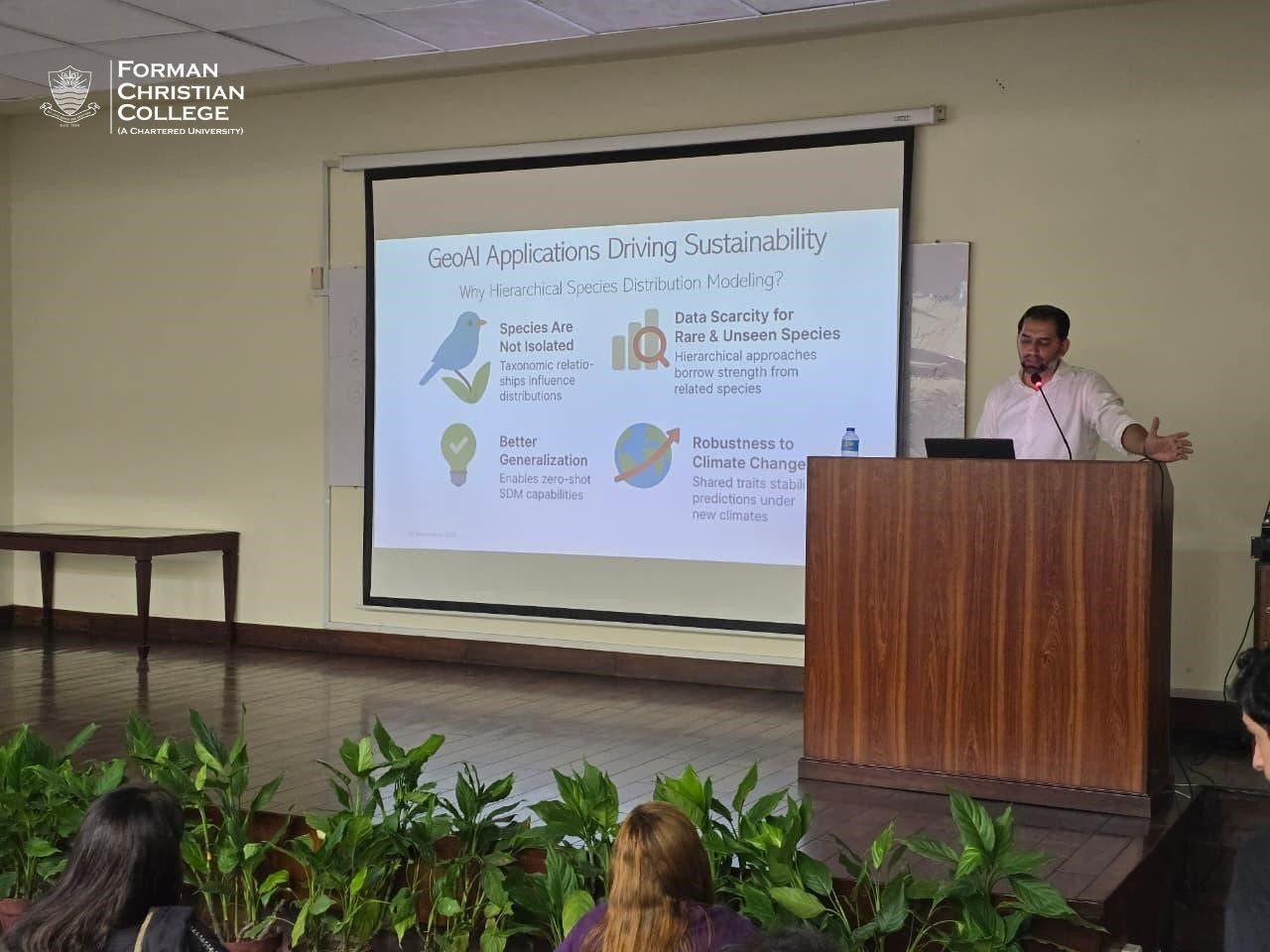
|
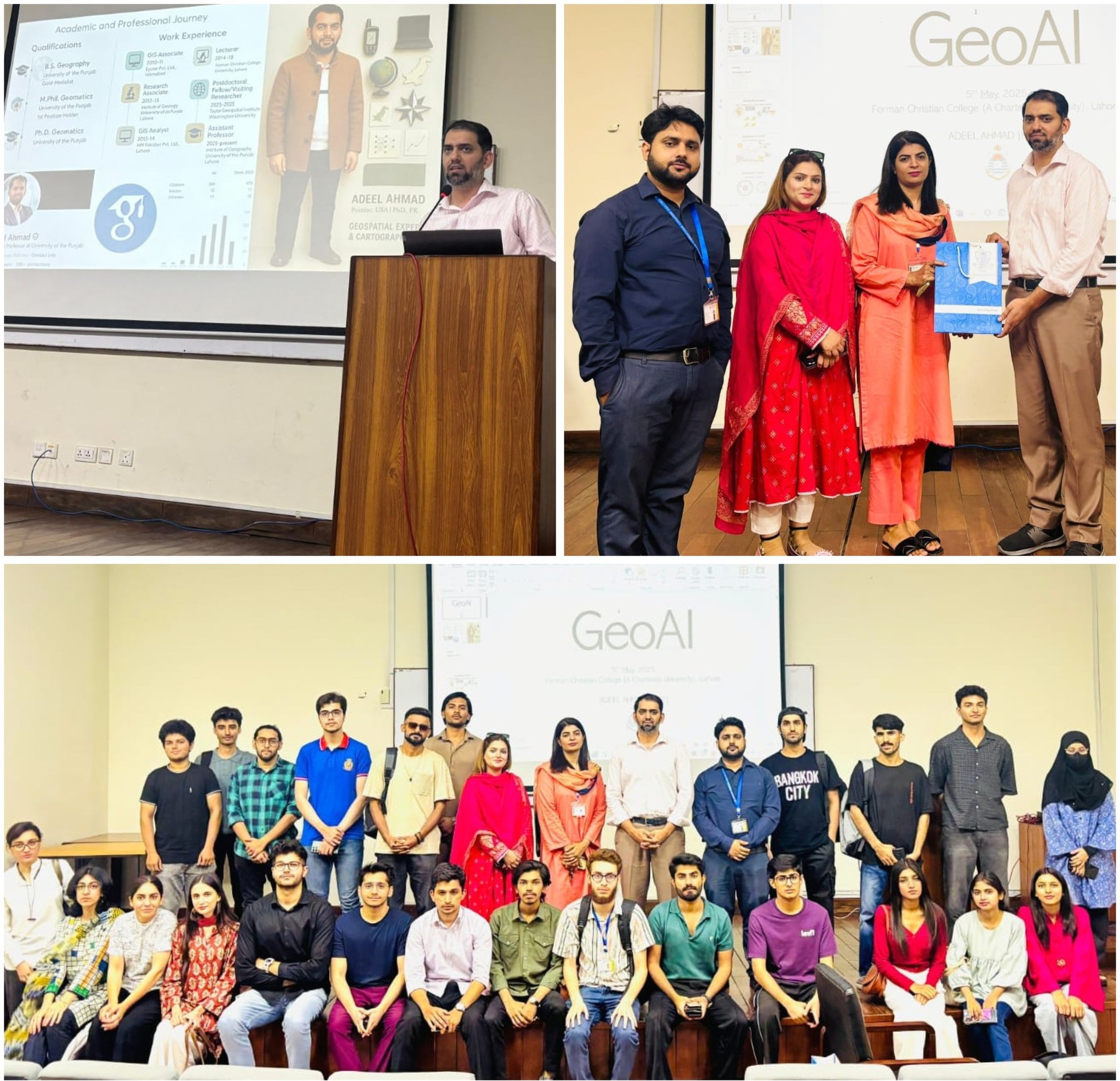
|
Motivational Session for Optometry Interns on Pursuing Global Academic Excellence
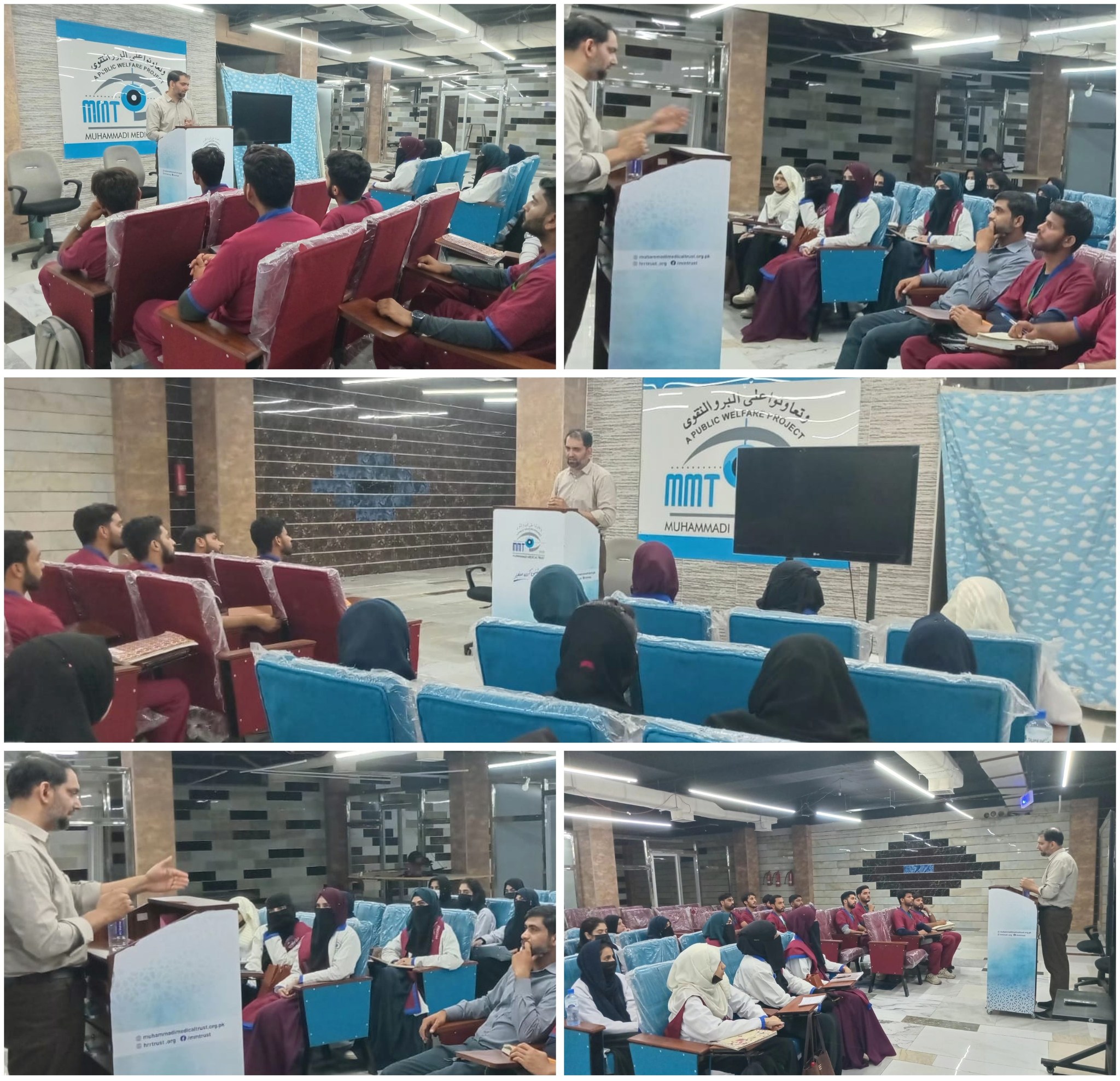
|
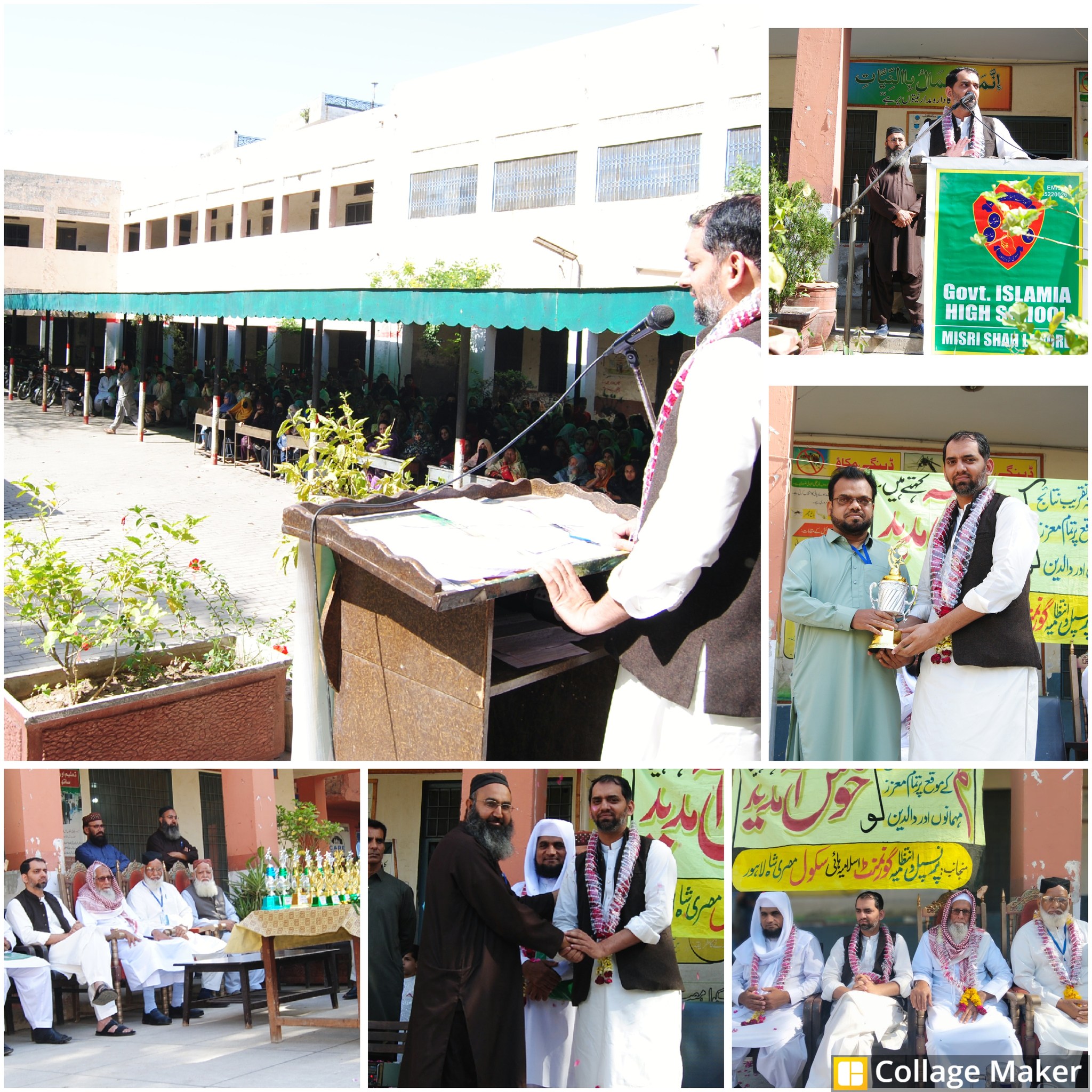
|
Training Workshops |
|
Acquiring Remote Sensing Data using Google Earth Engine (GEE)
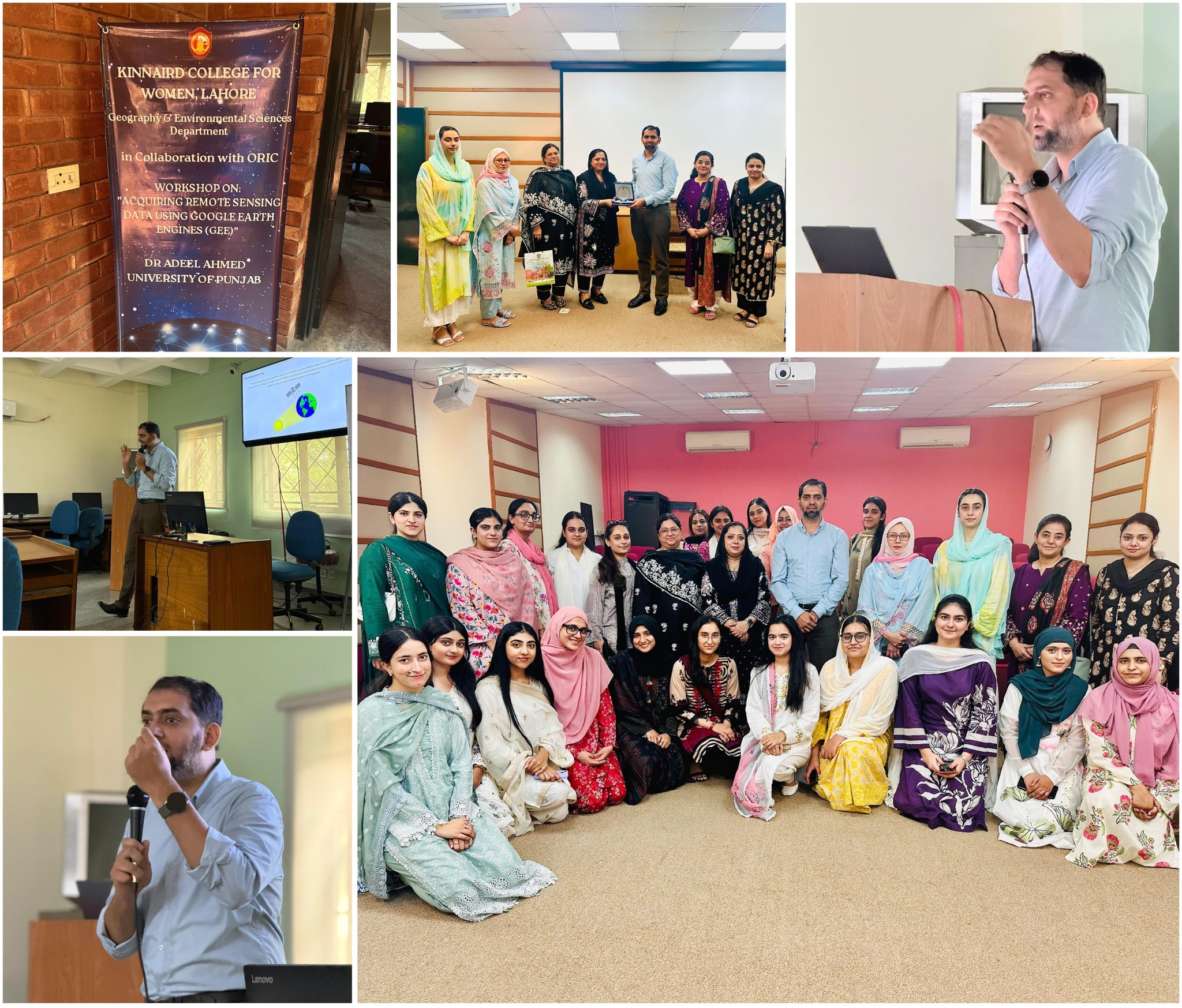
|
|
From Data to Decisions: Cloud Computing and Artificial Intelligence to Assess the Impacts of Climate Change on Water, Land, and Ecosystems
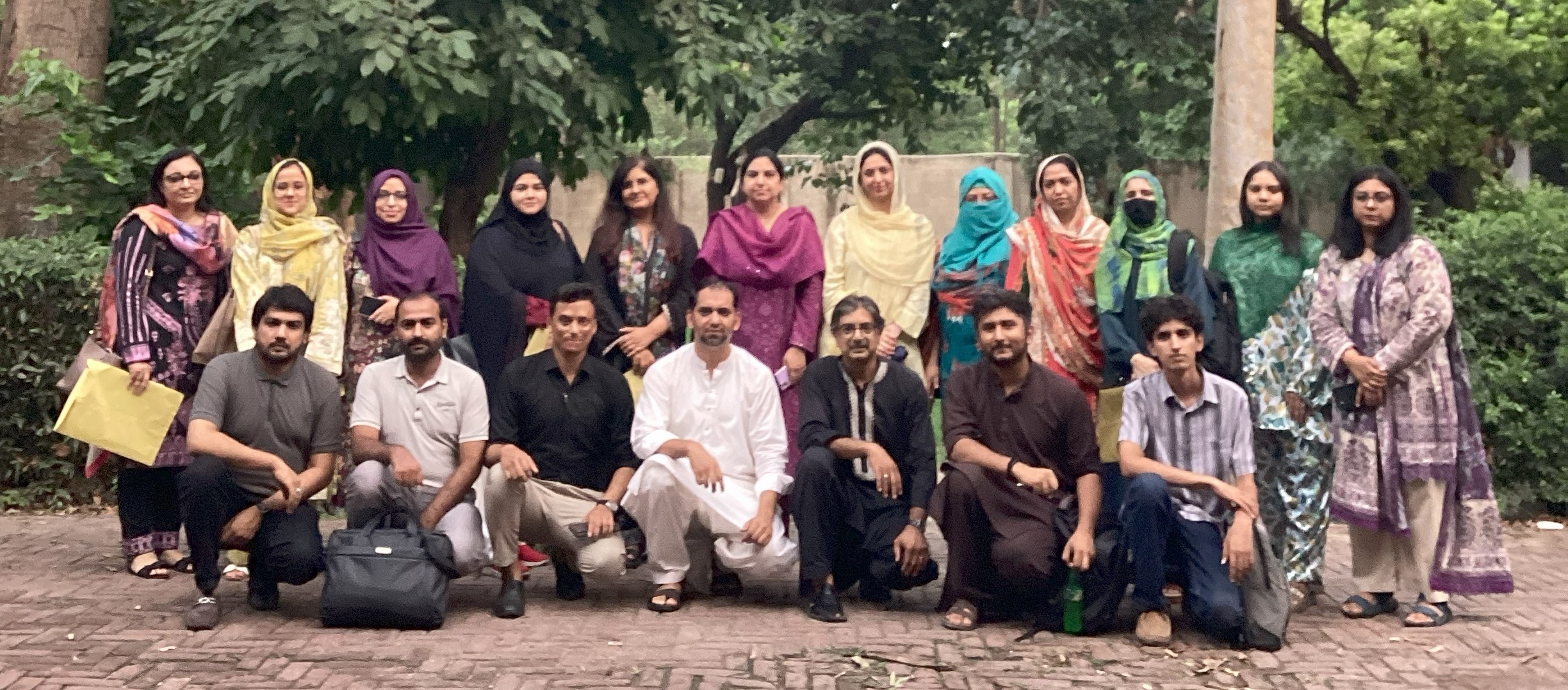
|